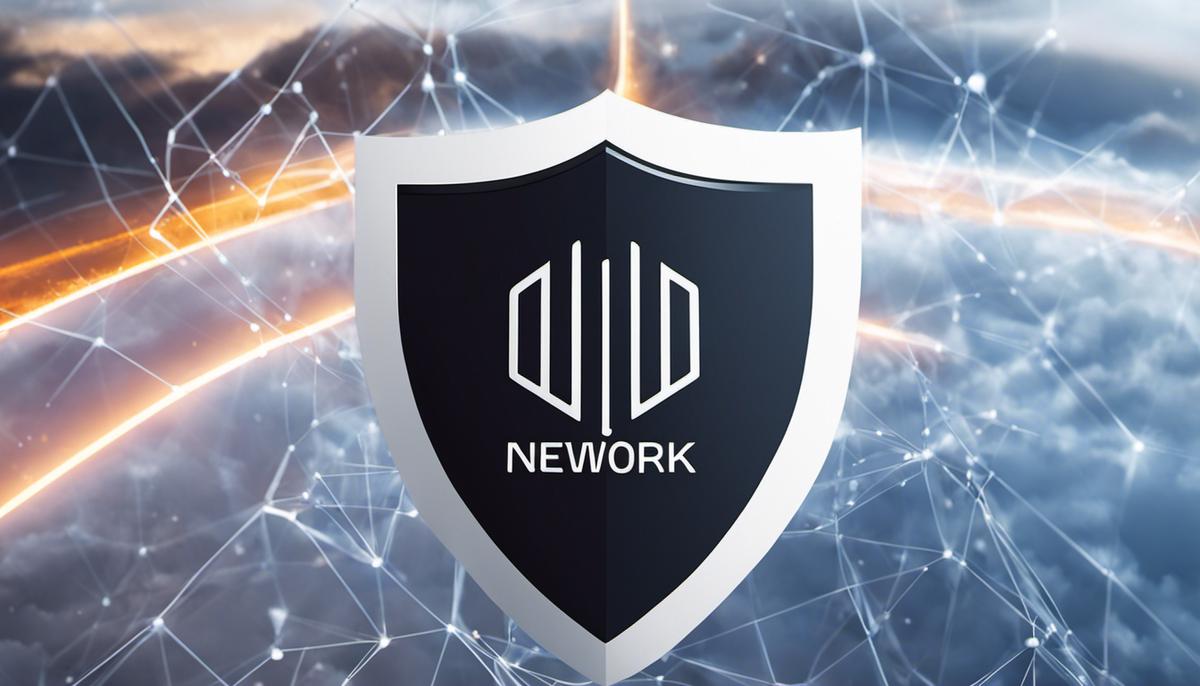As we transition into an increasingly digital era, securing networks in cloud environments has become paramount. AWS Network Security offers a robust and reliable framework that businesses can leverage to safeguard their sensitive data. To fully understand and harness the power of AWS Network Security, one needs to delve into its core components and functionalities, learn about its key features, explore practical implementation strategies, and integrate advanced security practices. From understanding concepts like IAM, security groups, and network ACLs to exploring features like AWS Shield for DDoS mitigation, this journey covers a broad spectrum of fascinating and crucial facets of AWS Network Security.
Understanding AWS Network Security
Headline: Understanding AWS Network Security: Essential Backbones of Modern Businesses
In today’s vast digital landscape, robust network security is the beating heart of countless enterprises. Here, we delve into Amazon Web Services (AWS), one of the leaders in network security, dissecting what it does, how it works, and why it’s become an integral cog in the wheel of today’s businesses.
Pivotal to its security suite, AWS offers innovative techniques that empower businesses to safeguard their data and workloads, with network security at the forefront. Understanding how AWS Network Security operates is crucial when evaluating the system’s profound impact on organizations worldwide.
AWS Network Security primarily works through several core components:
- Network Access Control Lists (NACLs)
- Security Groups
- Virtual Private Cloud (VPC)
- AWS Shield
each constituting a unique layer of protection.
NACLs are gatekeepers that control traffic to and from Amazon Virtual Private Clouds (VPC). These are customizable; users can control the allowed or forbidden traffic direction and port. Security Groups, conversely, operate like an inbuilt firewall for Amazon Elastic Compute Cloud (EC2) to manage incoming and outgoing traffic.
No conversation about AWS Network Security would be complete without mentioning VPC. As the backbone of AWS, VPC offers isolated cloud networks where AWS resources and applications can operate securely— the so-called ‘secure cocoon’ for businesses’ digital operations.
AWS also boasts an impressive anti-DDoS service named AWS Shield. This duo of AWS Shield Standard and AWS Shield Advanced provides foundational and thorough DDoS protection, respectively, reducing the likelihood of potentially damaging attacks.
But why is AWS Network Security so essential? Scalability, flexibility, and innovation are part of the answer. AWS allows businesses to scale their security alongside their growth and provides a flexible architecture where users decide on protection level. This DIY approach enables businesses to tailor security strategies in line with their risk assessments.
Moreover, AWS constantly innovates, adapting to the ever-evolving cybersecurity landscape, keeping organizations a step ahead of potential threats. AWS’ fine-tuning of security measures also helps the platform to remain compliant with data protection regulations, providing an added layer of trust for businesses.
Indeed, where speed and efficiency can make or break a business, AWS Network Security offers valuable peace of mind. It is a crucial contributor to an infrastructure where the benefits of a cloud environment can be realized without jeopardizing security. The enhanced layers of protection, coupled with the flexibility of control, provide a platform that reassures businesses, allowing them to focus on what matters most – innovation and growth.
In conclusion, A reality where technology and cybersecurity threats evolve hand in hand, AWS Network Security serves as an unwavering bastion, an essential component in the toolbox of any tech-savvy business – delivering solid, reliable security in a complex, dynamic world.

Key Features of AWS Network Security
Integration with Existing IT Infrastructure
One of the vital reasons why AWS Network Security is regarded as a preferred choice by organizations and businesses is its seamless integration with existing IT infrastructure. This integration creates an environment that fosters agility, giving businesses the option to coexist with onsite data centers. This model is known as a hybrid cloud, granting flexibility to run applications within a private, public, or hybrid environment.
Automated Security Assessment
An indisputable feature of AWS Network Security that stands out is Amazon Inspector. It’s an automated security assessment service that helps augment the security and compliance of applications deployed on AWS. Amazon Inspector accurately assesses applications for vulnerabilities or deviations from best practices. Astonishingly, it also produces a detailed list of security findings prioritized by level of severity. This free service helps organizations build solid applications, keeping compliance and laws in check.
Monitoring and Logging
Robust monitoring and logging form an integral feature of AWS Network Security. AWS CloudTrail enables governance, compliance, operational auditing, and risk auditing of your AWS account. Besides, AWS CloudWatch provides actionable insights to monitor applications, understand and respond to system-wide performance changes, optimize resource utilization, and get a unified view of operational health. It’s these in-depth insights that fuel informed decision-making to mitigate vulnerabilities and enhance overall network security.
Insider Threat Detection
AWS Network Security has responded to a significant security concern for businesses – insider threats. It provides features for supervising and logging user activity through AWS CloudTrail. Moreover, it offers user entity and behavior analytics via Amazon Macie, which assists in identifying any irregularities in user access or data usage. This advanced level of scrutiny serves as a powerful defense against threats arising from within an organization.
DDoS Mitigation
AWS Shield, a managed Distributed Denial of Service (DDoS) protection service, protects applications against DDoS attacks. Coupled with services like AWS WAF (Web Application Firewall) and AWS Route 53, AWS offers a violent force against any onslaught, ensuring application smoothness and reliability.
Customer-Accustomed Policies
AWS Network Security lets customers define their security and access policies in accordance with their specific needs. This manifests in features like IAM (Identity and Access Management), with granular permissions. The ability to customize these policies streamlines and fortifies security operations significantly.
Ultimately, AWS Network Security ensures a preemptive, agile, and resilient network security environment, providing businesses the freedom to innovate and grow without constant fear of cyber threats. An architecture that can be finely adapted to match any organization’s needs coupled with advanced threat detection systems – these are vital differentiators propelling AWS Network Security as a go-to solution.

Practical Implementation of AWS Network Security
After highlighting the broad purview of AWS Network Security’s role in modern enterprises, it’s imperative to delve into the practical implementation techniques that could potentially fortify a company’s security position.
For seamless integration into a pre-existing IT landscape, AWS Direct Connect enables a dedicated network connection from a company’s on-premise data center, office, or co-locate environment to Amazon Web Services. This nullifies any Internet adversities, rendering high-speed and secure data transfer with reduced network costs.
A constant security assessment is pivotal for an organization to detect and rectify vulnerabilities. Amazon Inspector, an automated security assessment service, provides this solution by examining applications for exposures and deviations from best practices. Reports are generated after analyzing potential issues, providing a roadmap for issue resolution processes.
Success in security implementation does not stop at prevention measures alone. Monitoring and logging play an equally significant role. AWS CloudTrail aids in the governance, risk auditing, and compliance of an organization by logging all activities in the AWS Environment. Additionally, AWS CloudWatch not only monitors applications and services but also provides actionable insights to optimize applications, react to system-wide performance changes, and simplify resource utilization.
To counter the rising menace of insider threats, AWS CloudTrail’s anomaly detection algorithms and Amazon Macie’s intelligent discovery service identify unusual data access patterns. These innovative measures promote early detection, allowing for the rapid implementation of countermeasures.
DDoS attacks are another prominent threat that can compromise a company’s network security. AWS, armed with the likes of AWS Shield for attack mitigation, AWS WAF for filtering malicious web traffic, and AWS Route 53 for managing DNS and addressing availability issues, provides a robust fortification against such pernicious cyber attacks.
Last, AWS extends the liberty to its customers to define their own security and access policies via IAM (Identity and Access Management). IAM facilitates the creation, management, and control of access to AWS resources, providing efficiency and granularity in authorizations.
In the panorama of diverse but interlinked security threats, AWS Network Security wields a holistic approach. Its services amalgamate preventive, detective, and responsive measures, promoting an agile, resilient, and fortified network security environment. Organizations leveraging AWS Network Security are, hence, not just equipped with robust shields but can also dynamically adapt to withstand evolving cybersecurity ecosystems.

Advanced AWS Network Security Practices
– AWS Network Firewall for granular traffic filtering and threat detection
As we delve into advanced AWS Network Security practices, it is important to discuss the AWS Network Firewall. This is an advanced feature of AWS that allows organizations to maintain a strong, secure network infrastructure with granular firewall rules. As the name implies, it acts as a barrier, preventing unauthorized access and protecting sensitive data from potential threats.
Utilizing stateful and stateless packet-level filtering, along with intrusion prevention systems, the AWS Network Firewall is adept at thwarting threats. Moreover, Amazon provides constant updates for threat intelligence feeds, helping to keep the firewall prepared for the ever-changing threat landscape.
– AWS Certificate Manager for secure SSL/TLS certificate management
SSL/TLS certificates play a crucial role in securing data transactions. Managing these certificates manually can be cumbersome and prone to human error, making AWS Certificate Manager a vital tool. This service simplifies the provisioning, deployment, and renewal of SSL/TLS certificates, enhancing your organization’s network security.
– AWS Managed AD for secure access
Organizations using Active Directory (AD) for access management can leverage AWS Managed AD. This service extends on-premises AD to AWS, ensuring secure access to AWS resources. A secure channel is established between the AWS Managed Microsoft AD in the AWS cloud and the on-premises Active Directory.
– AWS Key Management Service for encryption key management
AWS Key Management Service (KMS) introduces an additional layer of security by managing cryptographic keys used for data encryption. It supports the creation, management, and control of encryption keys, reducing the burden on the IT team and limiting the possibility of mishandling encryption keys.
– AWS Secrets Manager to safeguard access to applications, services, and IT resources
To fortify your network security, AWS Secrets Manager is used to protect access to your applications, services, and IT resources. This eliminates the upfront investment and ongoing maintenance typically associated with operating your own infrastructure.
– AWS Systems Manager for resource management
AWS Systems Manager offers a unified interface that allows you to view and control your AWS resources. It assists in maintaining software compliance by quickly scanning your instance inventory for any unpatched software, ensuring your network remains free from vulnerabilities.
Applying these advanced AWS Network Security practices can significantly boost your organization’s security posture. Remember, a secure network is not a one-time achievement; rather, it is a continuous journey that needs steady monitoring, updating, and refining. With AWS’s continually updated and comprehensive tools, achieving, maintaining, and improving this security landscape becomes a manageable task.

Mastering AWS Network Security does not solely depend on acknowledging its utilities and functionalities but also understanding how to implement it effectively and integrate advanced practices into your network security strategy. With measures like multi-factor authentication, the principle of least privilege, constant monitoring for anomalies, and the use of AWS Trusted Advisor and AWS CloudTrail, you can maintain high standards of security. As we navigate the digital landscape, bolstering network security remains crucial. After all, in an interconnected world, a secure network undeniably serves as the cornerstone of any successful business.

